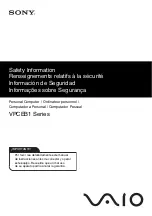
Assembling and Installing Systems
A-6
S7-400 and M7-400 Programmable Controllers Hardware and Installation
A5E00069481-04
Coupling Mechanisms
Interference can reach the programmable controller via four different coupling
mechanisms, depending on the transmission medium (conducted or
non-conducted) and distance between interference source and the equipment.
Coupling Mechanism
Cause
Typical Interference Sources
Direct Coupling
Direct or metallic coupling always
occurs when two circuits have a
common conductor.
•
Switched devices (supply affected
by inverters and external power
supply units)
•
Motors being started
•
Different potentials of component
cases with a common power
supply
•
Static discharges
Capacitive Coupling
Capacitive or electrical coupling
occurs between conductors which are
at different potentials.
The degree of coupling is proportional
to the voltage variation as a function
of time.
•
Interference pickup via parallel
signal cables
•
Static discharge of the operator
•
Contactors
Inductive Coupling
Inductive or magnetic coupling occurs
between two conductor loops through
which current is flowing. Interference
voltages are induced by the magnetic
fluxes associated with the currents.
The degree of coupling is proportional
to the current variation as a function of
time.
•
Transformers, motors, electric
welders
•
Parallel AC supply cables
•
Cables with switched currents
•
Signal cables with a high
frequency
•
Unconnected coils
Radiated Interference
There is a radiation path when a
conductor is subjected to an
electromagnetic wave. Impinging of
the wave results in induced currents
and voltages.
•
Local transmitters (for example,
two-way radios)
•
Spark gaps (spark plugs,
collectors of electric motors,
welders)
















































